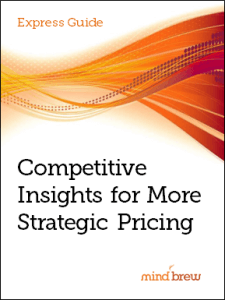Most of the time, talking about averages tells you absolutely nothing. Consider:
- The average person has one Fallopian tube.
- If three people are in a room and one of them is Mark Zuckerberg, the average person in the room is a billionaire.
- The average day of the year is called July 2.
- The average U.S. citizen lives in Lebanon, Kansas.
- Infant mortality was so high in the Middle Ages that average life expectancy was 35. But if you remove infant deaths from the equation, average life expectancy was 50.
- Half of the people you know are below average.
- Mathematician Benoît Mandelbrot loved to joke, “I was born in Poland and raised in France; therefore, on average, I am a German.”
You see, in each of these examples, looking at the average actually hides the most important part of the truth.
The same thing often happens in pricing. For example, you might be very happy to tell senior management, “On average, prices were up 8% last quarter.” But you could get to an 8% average increase if prices decreased on all your products but one, which had a tremendous increase. You could also get to that average 8% increase by closing only one deal all quarter. The average increase just isn’t all that important if overall revenues tanked.
Good pricing practitioners don’t just report on averages. They look deeply into their data to find the hidden trends, anomalies, outliers, and key indicators that provide the most relevant information. Your job is not to be a computer that simply does the math and creates a spreadsheet. Instead, your job is to take in all the data, find what is most important, and present it in a way that leadership can understand it. Your goal should be to find actionable truth to help guide future operations.
This responsibility also carries with it a tremendous temptation. Once you see how easy it is to tell different stories by picking and choosing which metrics you share with the boss, you’ll want to cherry-pick the stats that support your point of view.
Don’t do it.
Ultimately, your firm — and your career — will be best served by you doing the most honest and unbiased analysis you can. Don’t take any negative news in the metrics as a sign of personal failure; instead, use it to shape future decision-making to obtain more favorable outcomes in the long run.
If you’re not sure how to do this kind of analysis — or if you’d like to improve your skills — we have a couple of resources for you. The webinar Using Pricing Analysis to Drive More Growth explains how to ask questions that can lead you to greater profitability. It shows how to get beyond the tactical analysis most pricing practitioners regularly do to the more strategic thinking that is most beneficial for B2B firms.
A second webinar, The Fundamentals of Effective Pricing Analysis, provides a broader overview of pricing analytics. It covers the difference between reporting and analysis and offers suggestions and examples for improving your capabilities.
The average B2B firm is so-so at pricing analytics. But you don’t have to be average.















